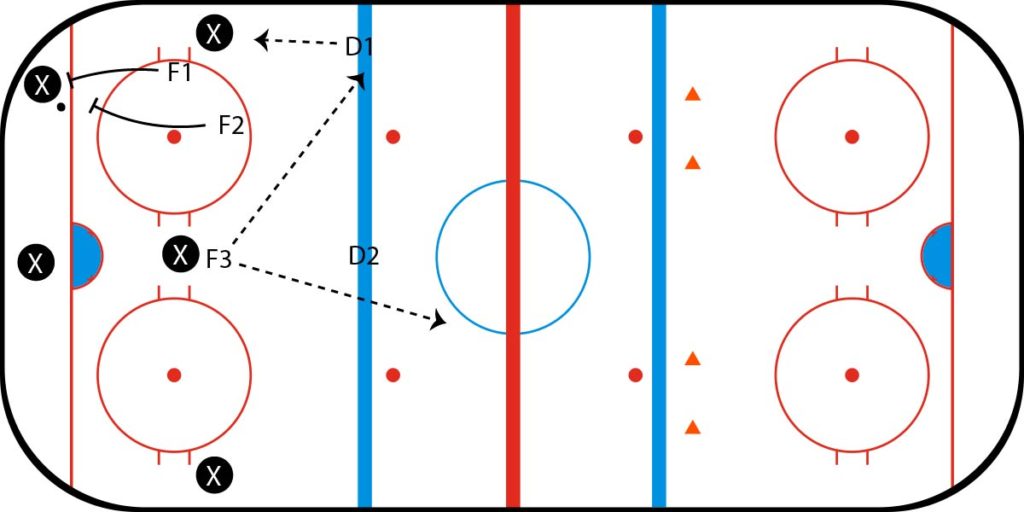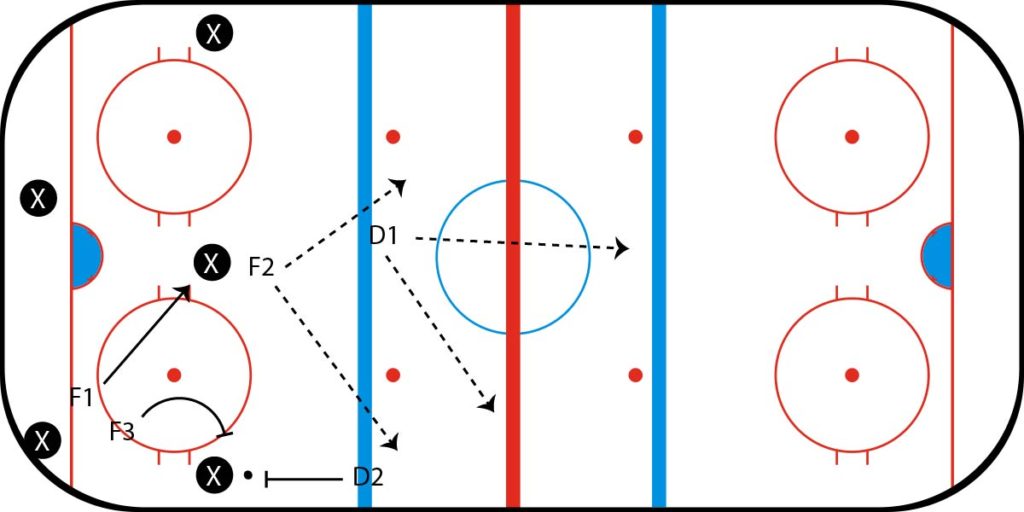2-1-2 Forecheck
At it’s core, a 2-1-2 forecheck is 2 pressure the puck, one stays high zone, and your two D hang out at the blue line. It is one of the most common forechecks in the game of hockey, but there are different ways of interpreting and executing it.
For us, we will use a low zone, high pressure forecheck, meaning our forwards (or nearest players) will relentlessly attack when the puck is low in the zone and on the half wall. As the puck moves up and out of the zone, we will float to more of a 1-2-2 zone cover. This low zone pressure optimizes turnover chances closer to the net while the zone cover provides backside and over top balance for engaged defense.
To get a grasp on this concept, lets look at a few common scenarios…

The puck goes into the corner and their D retrieves it. Our first player (typically a forward, so we’ll call them F1) attacks hard and tries to funnel them toward the inside. In the Pittsburgh region it is common to funnel them away from the net for some reason. Why? I’m not sure, because the whole objective of defense to to get them away from your net, so you’re helping them, not hurting. Anyway, we’ll try to force them towards their own net as much as possible. F2 (again, usually a forward, but could be a D) will pressure but maintain enough gap to adjust to loose pucks or scrums as needed. This should be no more than 1 stick length away until possession is gained. F3 covers the high slot region setting up the shooting triangle. They are also your backside cover if a D pinches or gets beat. THIS is why all players need to be able to play all positions!

As the puck moves to the other corner, F1 will typically chase, F3 shifts to the F2 job, and F2 goes to the slot. F2 can also be the chaser and F1 can go to the slot if those are the closer available players. Usually, F1 and F2 aren’t both chasing because it makes more sense to just release and shift whenever possible. At the top, the points will also shift, with the now weakside D typically playing off the line a bit in case of a quick transition through the rotation.

When the puck moves up the half wall, we will start to transition to more of a zone cover or a 1-2-2 while still attacking as much as possible. If warranted, the strongside D will pinch down while F3 applies second pressure. F1 will shift to a low zone and be ready to move either back into the corner or up ice as needed. F2 is the zone cover safety valve providing either strongside support if the puck chips up quickly, or backside support to a D taking their gap. Again, this is why all players need to know all positions.
The name of the game in this strategy is to make them screw up and give us the puck! Hard work creates turnovers which creates opportunities.
But coach, what happens when we get control?
Go to open space or the net. Set up a triangle. Take advantage of opportunities. Simple as that.
